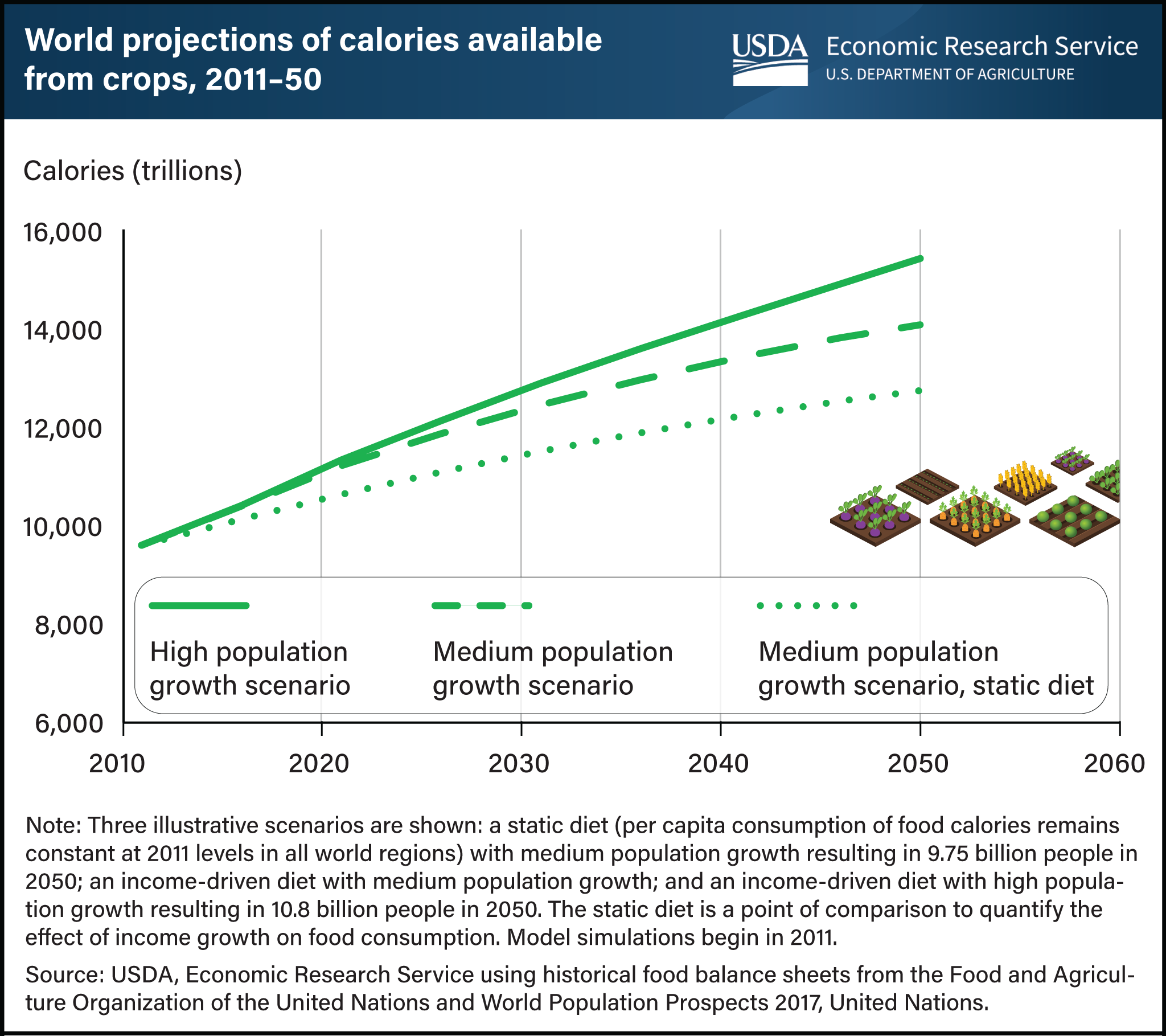Population and income drive world food production projections
- by Ron Sands
- 12/11/2023

As the world’s population increases, the global agriculture system will be expected to provide more food. To better understand how the world agriculture system may grow in response by 2050, researchers at USDA, Economic Research Service (ERS) created a range of scenarios based on population growth. Under medium population growth, production around the world would have to increase to 14,060 trillion crop calories to feed 9.75 billion people in 2050. This is a 47-percent increase in crop calories from a 2011 baseline. Crop calories, the total calories available from crops, are a measure of the size of global agriculture since crops can be either consumed directly as food or fed to animals to be consumed as meat, dairy products, and eggs. In a high population growth scenario, 15,410 trillion crop calories would be needed to feed 10.8 billion people, a 61-percent increase in calories from the 2011 baseline. With both the medium and high population growth scenarios, researchers assumed that as per capita incomes rise, people would increase their overall consumption of calories as well as consume a higher proportion of animal products, such as meat and dairy. ERS researchers compared these scenarios to a static diet scenario, in which per capita food consumption remained constant over time, providing a point of comparison to quantify the effect of income growth on food consumption. An expanded version of this chart appears in the ERS report Scenarios of Global Food Consumption: Implications for Agriculture, published in September 2023.
We’d welcome your feedback!
Would you be willing to answer a few quick questions about your experience?

